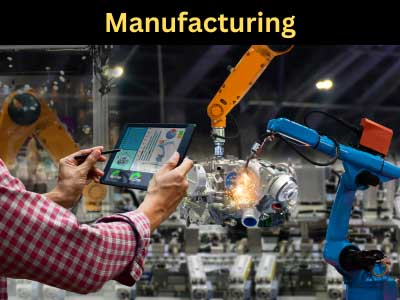Key Takeaway
To reduce manufacturing overhead costs, focus on key strategies like upgrading equipment and training employees. Newer equipment operates more efficiently, using fewer resources. Training ensures employees maximize equipment use and minimize waste. Streamlining processes also cuts costs. Look for areas where production can be sped up or made more efficient without compromising quality.
Reducing excess inventory and reusing equipment can further lower costs. Excess inventory ties up capital and space, while idle equipment can be repurposed or sold. Implementing lean manufacturing principles helps identify waste and improve efficiency. Regularly reviewing and adjusting these strategies ensures continuous improvement and cost reduction in manufacturing.
Overview of Manufacturing Overhead Costs
Manufacturing overhead costs refer to indirect expenses incurred during production but not directly tied to manufacturing a product. These include costs like factory utilities, machine maintenance, employee benefits, administrative salaries, rent, and equipment depreciation. Overhead costs are essential to keep operations running smoothly, but they can quickly add up if not managed properly.
By understanding what contributes to overhead, manufacturers can identify areas where they can cut back or make processes more efficient. Overhead costs can be categorized into two types: fixed (costs that don’t fluctuate, such as rent) and variable (costs that change based on production levels, like energy use). Identifying and managing these costs is crucial for improving the bottom line without affecting product quality or productivity. The goal is to streamline operations and reduce unnecessary expenses.

Identifying Areas of Overhead Waste
One of the key ways to reduce manufacturing overhead is by identifying wasteful areas. Overhead waste typically occurs due to inefficiencies in the workplace, such as overproduction, excessive inventory, inefficient equipment, or poor workflow management. Conducting regular audits of overhead expenses helps manufacturers pinpoint areas where waste is occurring.
For example, high energy consumption is often a major contributor to overhead waste. If equipment or lighting is left on during non-production hours, energy costs can soar unnecessarily. Maintenance issues are another significant factor. Equipment that isn’t properly maintained may break down more often, leading to costly repairs, production delays, and wasted resources.
Eliminating overhead waste starts with adopting lean manufacturing principles, which focus on optimizing efficiency by reducing non-value-added activities. This includes improving work layouts, cutting down excessive inventory, and eliminating redundant tasks. Simple changes like switching to energy-efficient lighting, automating routine tasks, or implementing a preventive maintenance plan can significantly reduce overhead.
Streamlining Processes to Minimize Overhead
Streamlining processes is an effective way to minimize overhead costs. Manufacturers can start by evaluating their workflows to identify bottlenecks, unnecessary steps, or outdated procedures that slow down operations. Simplifying and automating these processes can reduce time and labor costs, directly impacting overhead.
For instance, introducing automated material handling systems can reduce the need for manual labor in moving materials, thus reducing labor costs. Automating administrative tasks, like inventory management or order processing, can also reduce the number of employees required for back-office operations. This allows manufacturers to focus their resources on value-added activities rather than routine, repetitive tasks.
Additionally, improving communication and collaboration across departments can prevent costly errors, such as overproduction or incorrect orders. Streamlined processes ensure that everyone is working efficiently and that resources are being used optimally, leading to significant overhead savings in the long term.
Leveraging Automation to Lower Overhead Costs
Automation is a powerful tool for reducing manufacturing overhead costs. Automated systems can handle tasks that would otherwise require manual labor, such as quality inspections, material handling, and packaging. This reduces labor costs and improves efficiency, as automated systems can work continuously without breaks or errors.
For example, an automated assembly line can handle tasks more consistently and quickly than human workers, reducing the risk of errors that could lead to product defects or rework. Additionally, automation improves productivity by allowing manufacturers to produce more in less time, ultimately lowering per-unit costs.
Automation can also help reduce energy overhead. Automated systems equipped with smart sensors can optimize energy use by adjusting settings based on production needs, reducing energy waste. While the initial investment in automation can be high, the long-term savings from reduced labor, energy, and maintenance costs can quickly outweigh the upfront expenses, making it a valuable investment for manufacturers looking to reduce overhead.
Optimizing Labor and Resource Allocation
Optimizing labor and resource allocation is critical to minimizing overhead costs. Many manufacturing facilities operate inefficiently when employees are either underutilized or assigned to tasks that could be automated. Ensuring that labor is allocated to value-adding tasks is key to reducing overhead.
One way to optimize labor is by cross-training employees, allowing them to handle multiple roles and reduce dependency on specialized labor. This not only minimizes idle time but also increases workforce flexibility. Another approach is to automate low-skill tasks, like packaging or material transport, allowing employees to focus on more complex, high-value tasks.
In terms of resource allocation, manufacturers can benefit from adopting just-in-time (JIT) inventory systems, which reduce the need for excessive storage and handling costs by receiving materials only when they are needed in the production process. By optimizing the use of both human and material resources, manufacturers can lower overhead costs while maintaining high production efficiency.
Conclusion
Reducing manufacturing overhead requires a strategic approach that involves identifying waste, streamlining operations, leveraging automation, and optimizing resource allocation. By focusing on these key areas, manufacturers can significantly lower their overhead costs without sacrificing productivity or quality. Long-term investments in automation and process optimization can offer substantial cost savings, making it possible to maintain competitive pricing while increasing profit margins.
